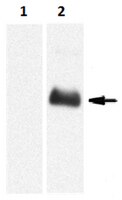MABT403 Sigma-AldrichAnti-Proteinase 3/PR3 Antibody, clone MCPR3-7
Anti-Proteinase 3/PR3 Antibody, clone MCPR3-7 is an antibody against PR3 for use in Affinity Binding Assay, Flow Cytometry, Immunoprecipitation, Inhibition Assay, and Western Blotting.
More>> Anti-Proteinase 3/PR3 Antibody, clone MCPR3-7 is an antibody against PR3 for use in Affinity Binding Assay, Flow Cytometry, Immunoprecipitation, Inhibition Assay, and Western Blotting. Less<<Recommended Products
Přehled
| Replacement Information |
|---|
Tabulka spec. kláve
| Species Reactivity | Key Applications | Host | Format | Antibody Type |
|---|---|---|---|---|
| H | WB, ABA, FC, IP, INHIB | M | Purified | Monoclonal Antibody |
| References |
|---|
| Product Information | |
|---|---|
| Format | Purified |
| Presentation | Purified mouse monoclonal IgG1κ antibody in PBS without preservatives. |
| Quality Level | MQ100 |
| Physicochemical Information |
|---|
| Dimensions |
|---|
| Materials Information |
|---|
| Toxicological Information |
|---|
| Safety Information according to GHS |
|---|
| Safety Information |
|---|
| Packaging Information | |
|---|---|
| Material Size | 100 μg |
| Transport Information |
|---|
| Supplemental Information |
|---|
| Specifications |
|---|
| Global Trade Item Number | |
|---|---|
| Katalogové číslo | GTIN |
| MABT403 | 04055977333619 |
Documentation
Anti-Proteinase 3/PR3 Antibody, clone MCPR3-7 MSDS
| Title |
|---|







